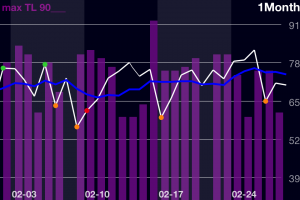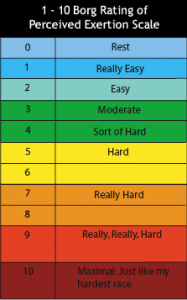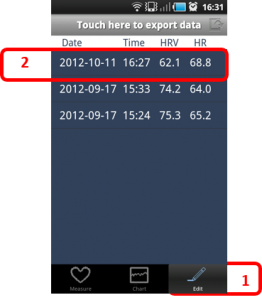Why record training load with ithlete?

It is strongly recommended athletes record training load in ithlete to add depth and meaning to their heart rate variability (HRV) data.
Recovering from a hard session?
Recording training load can often explain daily ithlete readings, for example an amber training recommendation after a hard session the previous day is expected– but without the reference to yesterday’s training session how can you be sure? The lowered HRV could be indicating oncoming illness or overtraining
Tapering & peaking
Visualising training load on the ithlete graph can help you better understand correlations between training load and recovery. Looking back at trends adds another dimension to HRV, showing how an individual responded to certain training patterns can help inform future plans. For example athletes who have been using ithlete for some time often reach out telling us how valuable it is in managing the taper ahead of big games or races!

Correlations with recovery
The whole principle of monitoring Heart Rate Variability (HRV) as an athlete is that you can see the impact of training and recovery to assess your readiness to train/perform. It stands to reason that the longer lasting and more intensive a workout, the longer it will take your body to recover. Recording training load in ithlete will help you visualise the relationship between certain workouts, or training loads, and your HRV.
To read more about the relationship between workout intensity and recovery take a look at this post by Simon Wegerif summarising one of the key pieces of research in to this topic; Effects of intensity and duration of exercise on HRV recovery
Training load scale
Some of the biggest problems with monitoring training load are scale and consistency. Scales used range between sports, levels and even between individual athletes, so it’s hard to compare. Furthermore for those unfamiliar with measuring training load it can be a challenge to keep records consistent to allow for direct comparison.
Whilst there are a range of scales out there, ranging from self-rated on a 1-10 scale through to objectively tracking metrics during workouts many believe it’s important to consider two key factors, volume and intensity (below). You may also be interested in this post discussing our recommending scale TRIMP.
Training load = Volume & Intensity
Training volume usually refers to the duration of training, i.e. minutes per day/hour per week, or distance covered, i.e. 50 miles per week. The preferred method often depends on your sport – distance may be more appropriate for runners or cyclists whereas a football coach may prefer to record sessions per week.
Training intensity refers to how hard you are training. There are many methods that can be used to measure intensity, such as heart rate, oxygen consumption, weight lifted, power output, blood lactate concentration or the athlete’s perception of effort during training.
It’s important to remember that taking measures of volume and intensity independently may not truly reflect the training stress imposed on the athlete. Considering volume and intensity it is suggested that the total training stress be measured using ‘the training load calculation’:
Training load = training volume x training intensity.
This calculation helps athletes monitor not only the training output (speed, distance, etc.) but also how hard the body was working during that workout.
RPE
 It is also worth mentioning RPE, or Rating of Perceived Exertion, one of the most widely used training load scales. It does just what it says on the tin, records perceived exertion by asking athletes to answer questions such as those in the picture opposite! Whilst RPE is relatively easy and cheap to implement key criticisms include that it is open to interpretation and entirely subjective.
It is also worth mentioning RPE, or Rating of Perceived Exertion, one of the most widely used training load scales. It does just what it says on the tin, records perceived exertion by asking athletes to answer questions such as those in the picture opposite! Whilst RPE is relatively easy and cheap to implement key criticisms include that it is open to interpretation and entirely subjective.
How to enter training load in ithlete
 Navigate to the ‘Edit’ screen (bottom right)
Navigate to the ‘Edit’ screen (bottom right)- Tap the entry/day for which you wish to enter training load
- A pop up box will appear for you to enter a value (see scale tips above!)
- This value will now be shown in purple when you view the landscape graph screen
Over to you…
How do you monitor and record training load? If you’re already in the good habit of entering training load in to ithlete we’d love to hear about times it’s proven useful too!

So the number I allocate to my daily chart refers to my PREVIOUS day of training? Is that correct?
This is easier, but as long as you are consistent and know which day it refers to, you should be fine. I do it for the previous day…
Please note:
Since the release of ithlete v3 the way you enter training load has changed. You can do it in one of two ways…
1. After taking your ithlete reading in the morning and adding subjective indicators Training Load will be at the bottom. Use this to enter yesterdays training load and it will automatically appear on yesterdays reading.
2. Alternatively you can return to the app later in the day to add today’s training load from the dashboard.
Is training load the same as tss ? I have different scores for Strava training peaks and garmin so getting confused
Hi Charlotte,
The quick answer is that they all use the same principle: ie that increasing heart rate, pace and wattage all have an exponential effect on the load your body experiences, but the actual numbers are different. TSS for instance is a scale created by TP that normalises 1 hr at functional threshold pace / power (FTP) to be 100 TSS